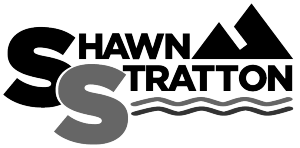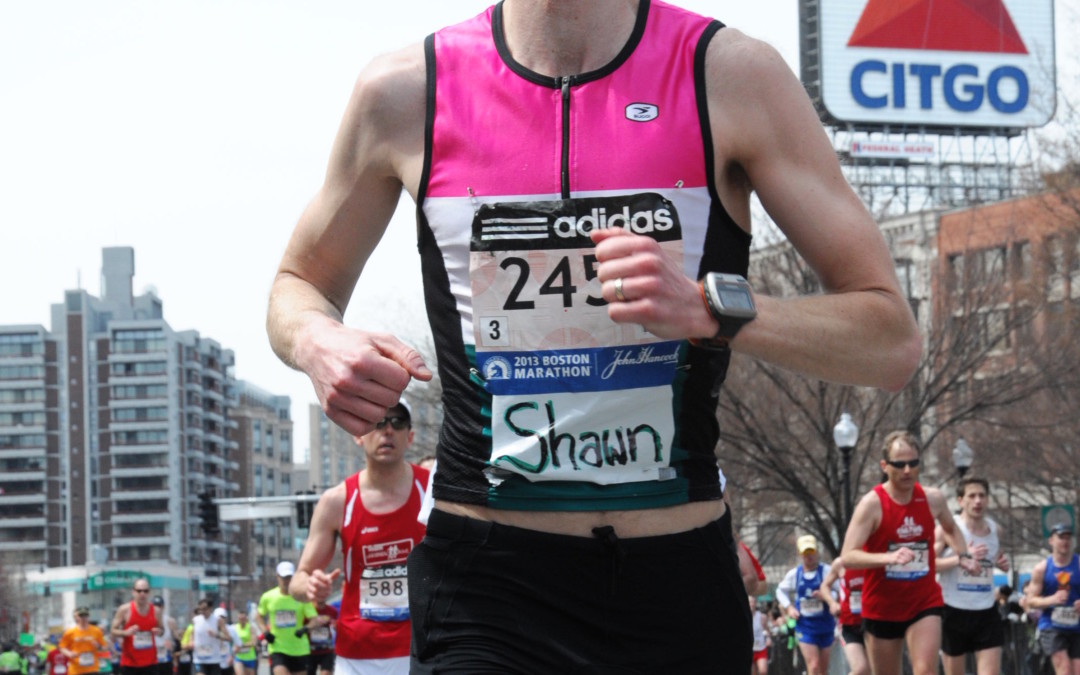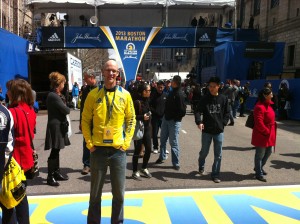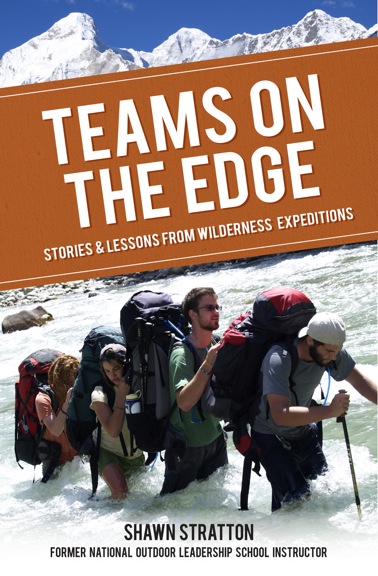Shawn Stratton 2013 Boston Marathon Race Report –
Note: This is a detailed personal account of my thoughts and experiences; it is not meant to be a philosophical account of my views on the race and the bombings. I realize that I am extremely fortunate to be minimally affected by the tragic events of April 15, 2013 My account is not meant to downplay the tragic loss and suffering that ensued that day. This is simply a brain dump of what happened to me to share with friends and family who are interested and as something I can look back on in years to come. Feel free to share.
Pre-race:
Having been participating in road-running races since I was 16, the Boston Marathon, the granddaddy of all amateur races, has always been on my radar – to participate in some day. I was thrilled when on September 22, 2012, I reached the qualifying time to run 2013 Boston; I registered for the 2013 race the next day. Despite winter conditions in Newfoundland, my training had been going well until about three weeks before race day. Over several training runs, and culminating with my last long run, I developed a spasm in my lower quad muscles and it was affecting the tracking of my kneecap. During this time I started to experience painful tendonitis-type pain around my kneecap. Not wanting to have to re-qualify for the race, and knowing that running in 2014 was not an option due to other commitments, I was determined to run this year despite my knee pain. I figured I had reached my peak fitness and just had to maintain it for a few more weeks by using an elliptical and pool running. In those last three weeks before the race I only ran on pavement once, for 50 minutes, which ended in considerable pain and my looking for shortcuts home.
Going into race morning I held out little hope of achieving my goal of a new personal best (sub 2:57), ideally coming in around the 2:50 mark. However, I was confident that, with a few pain meds on race morning, adrenalin, and crowd support, I could run the entire race and finish with a smile. The race adventure started several hours before the race when my friend Tom tried to drive me to the athletes’ staging area near the start line. Race officials highly recommend that you take one of the buses that organizers supply for athletes from downtown Boston to the start line. One issue with my taking the bus was that from where I was staying it would be much easier on Tom to drop me near the start and then go downtown. The other issue: the buses leave downtown at 6 a.m. for a 10 a.m. start; by going with Tom I could relax and have breakfast at home and get an additional two hours of sleep.
When we reached the highway exit to enter the town of the race start, the exit was closed to all traffic. That was the closest he could get me to the start line (view map:http://ow.ly/ks03s), and I had to walk for 40 minutes to get to the athlete’s village. I wasn’t actually planning to do a warm-up, but, oh well, here we go. There were several others in the same situation, and I had a great chat with a runner from Florence, Italy. I felt bad for Tom, as he had been concerned all weekend that he might do something to jeopardize my race and it had become a running joke. He often referred to a Seinfeld episode where Jerry and Kramer caused a professional in the NY Marathon to miss his wake-up time (check out the clip here: http://ow.ly/ka0yG). I wasn’t too concerned about the walk; despite Tom’s reviewing all road closures the night before, there was nothing we could do. I even asked a cop to give me a ride to the start (he declined). It wasn’t an ideal situation but it was all part of the adventure and I didn’t think the walk would make or break my race at this point. At the start area I dropped off my race bag, to be picked up at the finish, used the bathroom, and had my pre-race snack.
The Race:
Walking to the corrals I felt like I was going out for a Halloween party. At least half the runners had on what they call throwaway clothes. These are clothes you wear to the start line to keep you warm that you don’t mind discarding when the race begins. Most people wear old sweats from a secondhand store, as I did. There were some great outfits: one guy wore a fur coat.
I found my corral at the start line and waited for the national anthem and the gun to go off. I felt relatively calm, but my stomach was full. I seem to get mixed up between triathlons and running races, in my eating times. I can eat an hour or so later for a triathlon than a running race. I was in the first of three waves in the third of three corrals, so I was close to the front. I would say there were fewer than 1,000 people ahead of me in the 27,000-person race. With this in mind I thought the sardine-packed runners would spread out much more quickly than they did. Immediately I felt a small stitch in my side – probably from a full stomach and nerves. Over the first 6 mile I was very cautious about my pace; I didn’t want to go too fast because all the significant downhills were at the start. I was awed by the crowds and thought it was too bad I was so focused on getting a fast time; this would be a nice race to slow it down and really enjoy the spectacle that is the Boston Marathon. At times it felt like I was onstage at a rock concert and the wild spectators on the side of the road against the fence the front row.
At the 10-mile mark I was feeling good and right on my pace. By the 10-mile mark, I felt my calf tighten up and spasm for a split second. I tried to ignore it; a minute later, a spasm in my hamstring. I have had spasms before in races but they didn’t usually hit me until at least mile 20. With the hamstring spasm, I knew any hope I had of attaining a personal best time was gone. I was a little upset at first, wondering why I was feeling this way; if anything, I thought my knee would be the problem. There was some pain in my knee but it was manageable and did not affect my pace. With potential reasons for the spasms running through my head, I decided that they were caused by running only once outside in the three weeks leading up to the race. The pounding had taken its toll on my leg muscles already. There may have been many other reasons but, having put in six 20-plus-mile training runs and many weeks over 60 mile training, I feel I had the fitness and had put in the miles to withstand the distance. I had heard that many people’s legs seize up when they hit the Newton hills at 16 miles, but I hadn’t even reached them yet.
I knew then that, if I was going to finish this race, I would have to alter my goals and change my attitude The good thing was I didn’t have to deviate from my number one goal – finish with a smile. I figured that if I just slowed down I could hold off the spasms for at least a few more miles. I would now get a chance to take it easy and soak up the incredible atmosphere of the race. To give some perspective on the crowd, the St. John’s marathon where I achieved my qualifying time for Boston had 54 runners and about that many spectators at the finish line. In Boston there were half a million spectators and many areas along the course had people five deep. It was one 26-miles-long street party! Kids offered water in Dixie cups and orange slices, students offered beer and kisses, and nearly everyone wanted a high-five. I had read that if you put your name on your shirt you will feel like you’ve had a hundred thousand family members watching the race and cheering for you. I felt a little silly putting my name on my jersey, but with my knee issues I could use all the help I could get.
Once the spasms started, I slowed down at the first med tent I came across and asked for salt, hoping that that might alleviate my spasms. One of the volunteers grabbed a salt packet and caught up to me to hand it over. I poured most of its contents on my tongue, but unfortunately I had just passed a water stop; I would have the salt in my mouth for another mile until the next water stop. I asked for salt at every med tent the rest of the way, and, surprisingly, none of them had any. Fortunately for those who had chafing they did have lots of Vaseline. Each med tent had four or five volunteers holding out Popsicle sticks with Vaseline on them; I almost confused these with salt sticks – that would have been dreadful. At one med tent when I asked for salt a volunteer told me that they had potato chips. One volunteer at a med tent told me they had chips when I asked for salt. For the next half a mile I ran and stuffed chips into my mouth, a first for me. The chips would have gone well with all the BBQs I smelled along the course. Hitting the Newton hills, the four most significant hills of the course, was not the challenge I expected because I had slowed down enough that I just slogged up them, trying to keep the spasms at bay and not walk. With the amazing crowd support it would have been difficult to walk: their energy picked you up and pushed you forward.
Along the course I had goose bumps and I was overcome with emotion by the support, but nothing matched passing US military with full backpacks walking the course. As I came though Boston College area of the course, where I passed several of them, the boisterous crowd erupted in “USA, USA, USA.” Over the last few miles I really tried to absorb the atmosphere as my legs became tighter and tighter. I had to stop twice to stretch, which, surprisingly, made my legs feel better. I was afraid that, if I stopped, my legs would totally seize up and my day would be over. Coming onto Boylston Street, I took the last corner wide and felt like I had the whole street to myself and the thousand spectators’ cheering was for me – just one of the many surreal experiences of the day. My final time of 3:15 was better than the four-hour run I expected after the spasms hit.
Post Race:
After crossing the line I was funneled to the finishers’ chute which included stations giving out water, blankets, food, medals, and Gatorade, and finally the buses where our personal belongings had been held for us. When I was given a blanket, I felt quite warm and wondered if I needed it. By the time I got to the bus, and my clothes, however, I was shaking vigorously and was mildly hypothermic. Funny how the brain plays tricks on you! After the buses I was directed to the family meet-up area where, thankfully, I found Tom and Dianna and put my sweats on. Shortly after I got some layers on and the shivering subsided, we made our way to Max Brenner’s restaurant. I had been to this restaurant, famous for its hot chocolate and really chocolate anything, a couple of times in NYC, and was thrilled to learn there was one in Boston. It turns out the restaurant was located on the marathon finishing stretch, 200 meters from the line. I was really looking forward to eating there – we had made a reservation six weeks in advance. With the road closures, hobbling over there took us about half an hour.
As we got to the restaurant, Tom, hungry and eager to eat, went inside to see if they had a table for us; we were early for the reservation. I hung outside for a few minutes and watched runners come down the final few hundred meters and enjoyed being a spectator for a moment. I saw another spectator waving a Canadian flag and, in a moment of exhaustion and national pride, I asked to have a picture taken with her. Where the picture was taken was actually about 50 feet and less than five minutes from where the second bomb exploded. From the timeline, direction of travel, and location, it is likely that the bombers walked right past us as we took the picture. Tom sent the pictures to the FBI. This is where the second blast happened http://ow.ly/ks0n7 . If you go to this google maps link you can see that only Starbucks was between Forum and Max Brenners http://goo.gl/maps/uqykp.
Inside Max Brenner’s, we looked over the menu and talked about how good the chocolate milkshake was going to taste. The waiter came over, introduced himself, and left to get our waters. That’s when we heard an explosion, about 200 meters away, near the finish line. (Tom and Dianna had been standing next to the flags where the bomb went off about 50 minutes before, when I crossed the line.) It was a loud bang but the thought of a bomb was the furthest thing from my mind. I thought that the large video monitor may have tipped over or the bleachers collapsed. Many people in the restaurant were curious about the noise and started walking out to the street to see what had caused the commotion. I sat in my chair, unfazed, knowing I would just get in the way. Someone would tell us what happened. I was still fixated on the milkshake that I had thought about for a month, and the entire marathon.
When a second blast went off, the entire restaurant turned to panic. As I sat in my seat stunned, Dianna, sitting on my side of the table, grabbed my sleeve as she got up from the table and said, “We have to get out of here.” The second blast was much louder than the first. People were yelling “GET DOWN,” and some ran to the emergency exit at the back. As I got up from the table, I saw a bartender launch himself over the bar, knocking over a tray of cutlery and glasses. Not knowing what was going on, my first thought was, aren’t you overreacting a little? As we got up from the table, I didn’t know if I should get down and lie on the floor or try to make my way to the exit. I didn’t want to be standing up if another blast was going to happen closer to us, but I didn’t want to be in the building if it was going to collapse. So much runs through your head in a split second at a moment like this. Turns out I didn’t have much of a choice because Dianna had a grip on my jacket and was rushing me out the exit. At first we headed toward the bathrooms; we met people coming out, telling us not to go that way. As we made our way to the back hallway leading to the exit, I looked back at the table and spotted Tom gathering up our belongings. As we entered the back hall, things became very scary for a moment. There were so many people rushing out the door at once that we were packed like sardines in a can, and, to make matters worse, there were several chairs sideways on the floor that we had to climb over. For a moment I had visions of people getting trampled in fires at overcrowded bars. The chairs must have been stored in the back hallway and were knocked over in the commotion. I tried to push a couple of the chairs to the side, but I felt hands pushing on my back. Dianna and I got to the back exit door, scurried down the stairs, and poured into the back alley. We fixed our eyes on the exit, willing Tom to come through the door. A moment later he appeared carrying our bags. There was total confusion; no one had a clue what was going on, but the second blast sure sounded like a bomb. All we knew was that we had to get out of there. We got out of the alley and started walking in the opposite direction, with no immediate plan. We were all on our cellphones. I called my father, as I thought he was the one I was most likely to reach, to tell him and for him to tell everyone else who needed to know that I was fine. As we left the alley, someone mentioned that a bomb had gone off in the subway. At the time Dianna and Tom thought their daughter was on the subway coming to meet up with us. After a few unsuccessful attempts to reach her, she was finally connected and we learned that she had not left yet and was safe in her nearby college dorm room.
After walking four or five blocks, we stopped in order to come up with a plan. I apologized for not walking faster, but I was moving as fast as I could, given the circumstances. Our original plan was to get a cab to the ferry that would take us back to the suburb where Tom and Dianna live. After a few futile attempts to hail a cab, we realized there was no hope: we would be walking. At this point the area was abuzz with emergency vehicles zipping by and helicopters buzzing overhead. I have always appreciated the work of first responders (fire, EMS, police, etc.), but for the first time I thought, we get to leave the scene as fast as we can, but these people have to go to it. This is always the case for them, but this situation seemed a little different as no one knew if a third, fourth, or fifth bomb would go off in the area. We walked for half an hour, talking to strangers along the way to hear if they had any updates on what was going on. We took a break on a park bench, as my legs were about to give out. At this time I updated my Facebook status, assuming a few folks might be wondering if I was okay. One blessing of Facebook: I wouldn’t have to send out or respond to many emails and could just write one post. Eventually we made it to the ferry, where we caught the first glimpse of the destruction on a TV screen. We sat there in disbelief. My phone buzzed with texts and Facebook messages from media in St. John’s. Within five minutes the local paper (the Telegram) and two local TV news stations (CBC and NTV) contacted me for an interview. It took many attempts on my phone, and then Tom’s phone, but I managed to talk to all three while I was on the ferry leaving downtown Boston. NTV had me live on the air during the six o’clock news. I can hardly remember what I said; I was still in shock. By the time we got back to the house, more media had contacted me, the Globe and Mail, CBC Radio, CBC.ca, CTV, and others. It was overwhelming; I thought, I guess this is why they have press conferences. I was trying to accommodate them all, until I talked with Alexandra (my wife) that night. I missed one of her calls because I was talking to the media, and another media call may have come while I was talking to her. I could tell from her voice that she was upset; she just wanted to talk to me. I had no idea how this was affecting her. She had played what-if scenarios over and over in her head all afternoon. I stopped taking calls that evening and had a good chat with her. I was still in shock and hadn’t yet started processing the experience.
I got very little sleep that night: the events kept running through my head, and I watched the news coverage. The following morning I had an on-air interview with the local CBC radio morning show. The host started the interview by playing a recording of the two blasts. It was the first time I had heard the blasts without a visual on TV and my mind catapulted back to the restaurant and the chaos that had ensued. I immediately choked up and didn’t think I would be able to talk without breaking down. I managed to compose myself and get through the interview (insert link), but lost it, crying uncontrollably for a few minutes, upon hanging up. This was the first of several times I have been overcome with emotion without warning since the race. Watching the Boston Bruins’ tribute set me off, and again yesterday when I was driving with my daughter and saw some joggers wearing Boston Marathon jackets. I am still a little on edge. I have been startled several times by loud bangs this week and hearing emergency vehicle sirens sends my mind back to Boston.
As I finish typing this, it has been a week since the marathon. I had been glued to the news all week, even when I didn’t want to be. Looking back at the experience it (obviously) has been extremely difficult to summarize. I had two profound experiences that day: Running the marathon was one of the coolest experiences of my life; followed by, the scariest and most tragic event I have ever been a part of. I know it could have been much worse for me, and my heart goes out to all those whose lives have been changed forever by these events.




